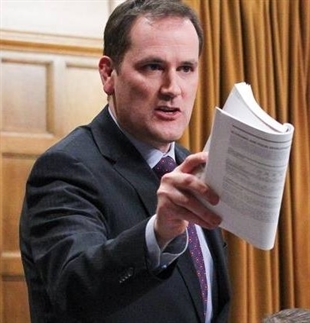
Dan Albas a Member of Parliament.
Image Credit: SUBMITTED/Dan Albas
March 30, 2019 - 12:00 PM
OPINION
In last week’s report I provided some highlights on the recent 2019 budget and asked citizens if they liked what they saw in the budget so far.
I also made a commitment to share my own thoughts on this budget as an opposition Member of Parliament.
Most critics have labelled this budget as an ‘election year goodies’ budget that targets certain voting demographics that the Liberals hope will translate to votes in the October election.
While I do not disagree with that sentiment, I would submit that most every sitting government in an election year tables a budget that it believes will be politically popular.
My concern with this budget is somewhat different.
As you may have heard, household debt levels here in Canada are at an all-time high.
Household debt as a percentage of gross income in 2016 was 166%.
In January of 2019 that has now increased to 176%.
Why do I mention that in the context of this budget?
The new “Canada Training Benefit” on the surface sounds like a good program encouraging job skills retraining.
However when you read the fine print only $250 is available per year up to a career maximum of $5,000.
The challenge that I am already hearing is the majority of training programs cost well in excess of that amount.
Many skills training programs are literally thousands of dollars or more.
For many workers to benefit from this $250 training credit it will mean borrowing thousands and increasing household debt.
Similarly, to access the credit of $5,000 towards the purchase of a new electric car for most would mean borrowing up to the maximum for the program amount of $45,000.
This again results in more household debt for anyone borrowing for a new vehicle purchase.
A similar situation is created with the new home buyers program.
Rather than eliminate the GST on affordable new housing (as has been done with the PST provincially), this budget only offers more options that encourage borrowing.
Borrowing $10,000 more from your RRSP, up to maximum of $35,000, is an option that few new home buyers can access.
The new first time home buyers incentive on the surface sounds helpful.
The program can help provide between 5-10% of the down payment towards a maximum CMHC insurable mortgage up to $480,000, not counting the total down payment.
The challenge with this program is also in the fine print.
The maximum $480,000 mortgage value is also based on the programs maximum allowable household income level of $120,000 annually.
In a community where the average household income is $70,000, the maximum value under this program is set at 4 times the income, meaning a CMHC insurable mortgage limit of just $280,000. A significant difference.
These are just a few examples that all point towards increased household debt in order to access the benefits of these programs that ironically are themselves being offered by a $19.8 billion deficit budget.
My question this week:
At this current rate of spending, by 2040, an additional $271 billion in new debt will have accumulated, not factoring in household debt levels.
Are you concerned about this?
I can be reached at Dan.Albas@parl.gc.ca or call toll free 1-800-665-8711.
We welcome your comments and opinions on our stories but play nice. We won’t censor or delete comments unless they contain off-topic statements or links, unnecessary vulgarity, false facts, spam or obviously fake profiles. If you have any concerns about what you see in comments, email the editor.
News from © iNFOnews, 2019